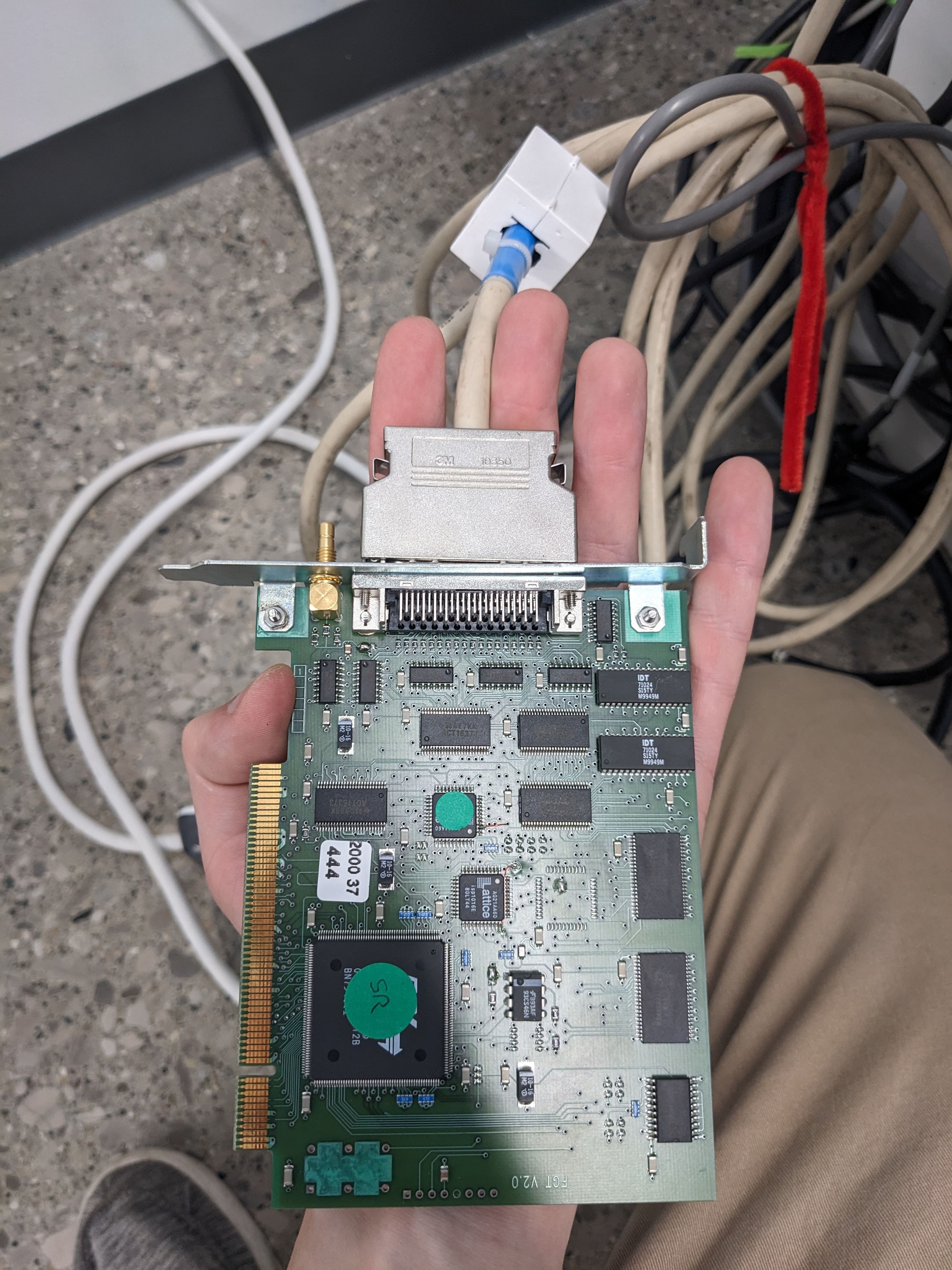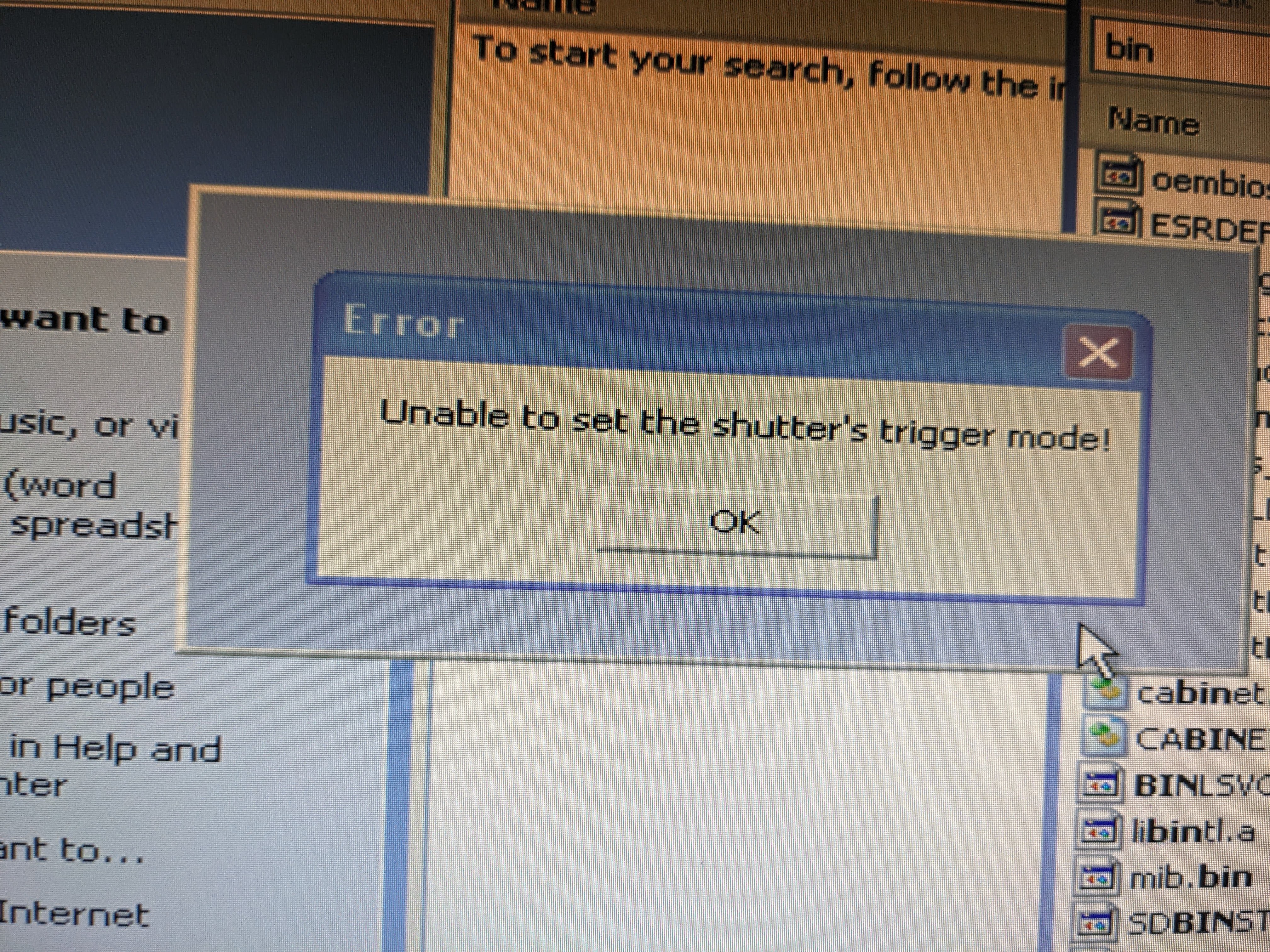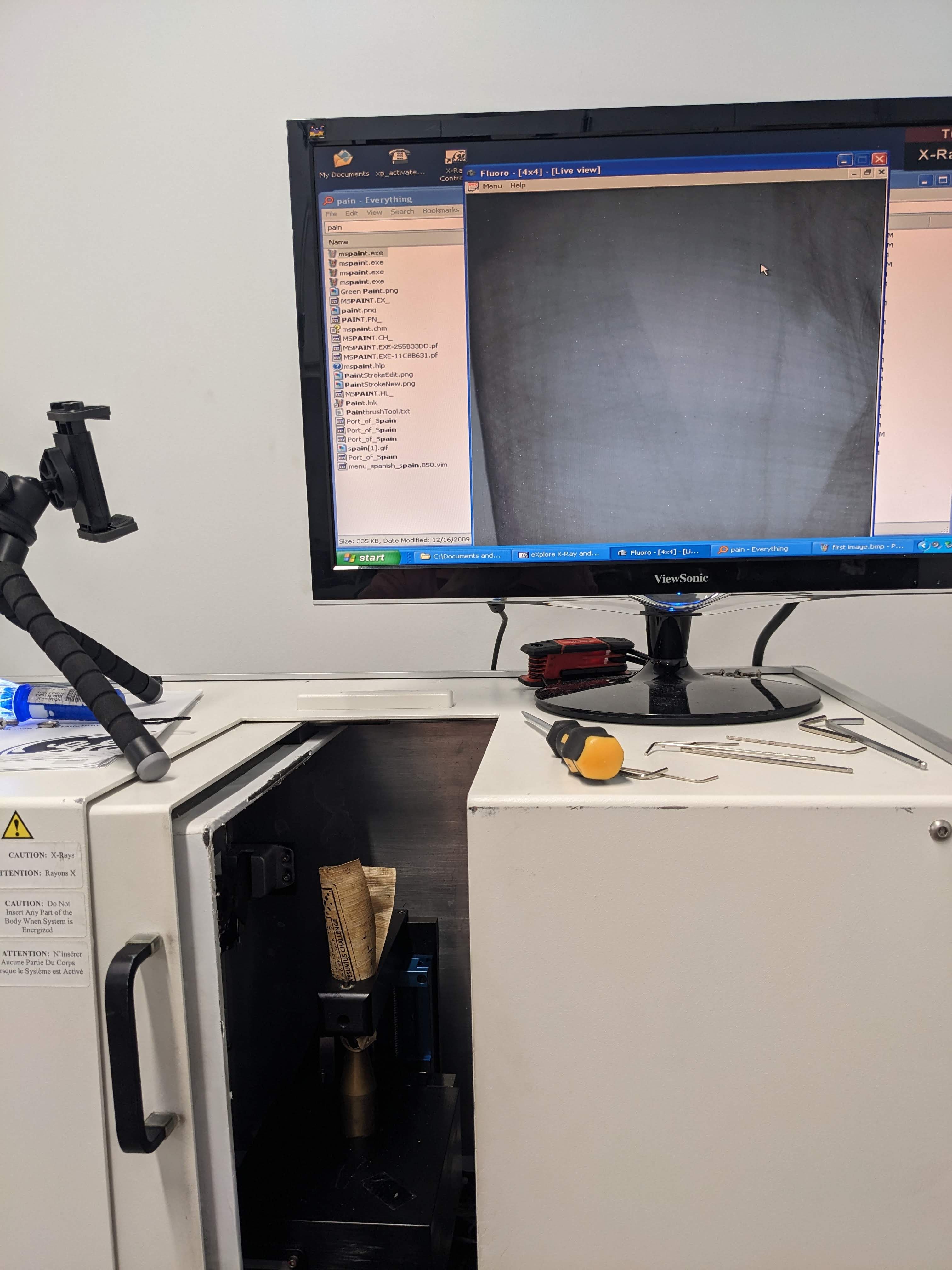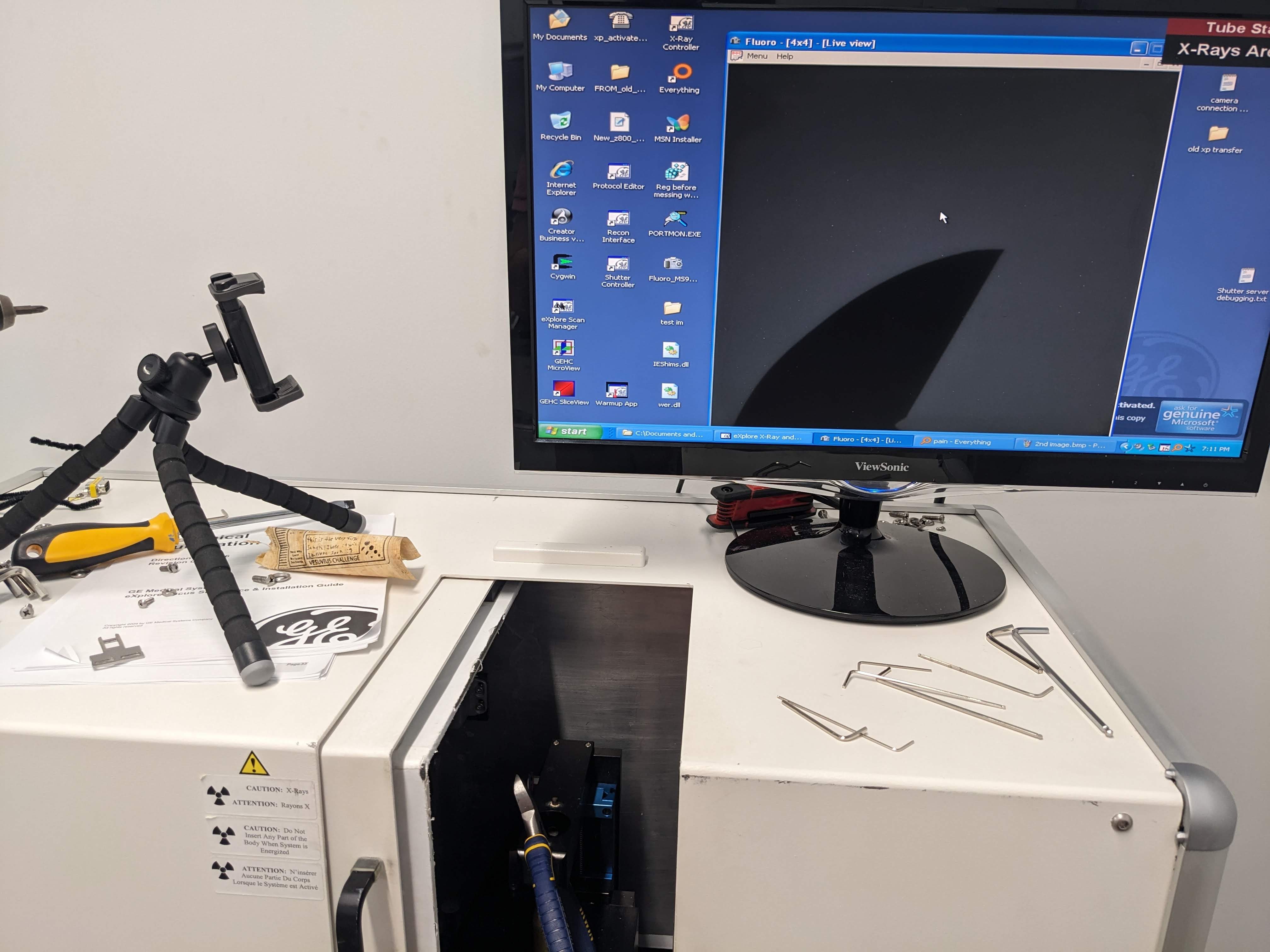It started with the arrival of the rare and mythical, ancient ATMEL LVDS capture card that fit the custom 50 pin connector to the camera. Thanks, Trifoil, for sending a spare!

After installing, I was able to open up both Comcamm (for sending serial commands to the camera) and the FGT frame grabber program (for actually reading the images. Try as I might, though, all I got were blank images and occasionally something seriously buggy.

I was hoping I could set it to continuous readout mode and get some images, but apparently this very old CMOS sensor is unable to read out data while receiving new signal --- and the source is not capable of ramping on and off that quickly. In other words, there needs to be a shutter (in this case one that physically blocks x-rays) for it to work properly.

The shutter in this system is a block of 2mm thick sintered tungsten-copper (insider knowledge), attached to a geared, brushless DC motor, placed in between the source and the object and also passing through a little optical interrupt switch. The switch, motor, and control unit are then connected in a mess of wires back and forth to the camera, the machine control, and a direct connection to the computer that has never triggered. The shutter seems to be what the whole system is built around, almost --- like a little heart beat --- and nothing will work right if the shutter doesn't run.

So you can imagine my frustration where, despite trying different cables, different ports, different rates, different operating systems, monitoring the ports, monitoring the program, and so many kinds of turn it off and on again, still getting some variation of the above error when starting the shutter controller. What else can I do? Corner the person who designed it 25 years ago?
Hmmm... there's an idea...
Anyway, there's also a native program called "Fluoro" for getting a live view of what the camera is seeing. Thankfully, it would open despite the shutter not initializing, and I was able to confirm that the camera is, in fact, communicating info with this program. By making the shutter rotate manually, I could get some images of "snow" (dark current) to pop up on the screen --- and the longer I'd let it "expose", the more snow there would be.
A great sign! Now... how to try with the x-rays?
In the long-term I can just drive that motor and its possible encoder with my own electronics. But in the short term --- that is, in the past few days --- I just wanted to get an image at all. Something to prove that the system works all together, that the scintillator hadn't peeled off or the cables hadn't run out of carburetor, or something.
Let's just say I found a way. So say hello to my first couple of proof-of-concept images.


That's some rolled-up papyrus (long story) and the blade of a random tool I had lying around. And I must say, I was surprised to see them look so good and sharp! I was expecting a terribly warped image or stripy lines that would normally be corrected for in a specific machine. But looking at these, this is functional for so many things right out of the gate --- and it'll only get better as I work my way through the calibration process.
But hey! I'd say I deserve a bit of a victory lap! About 10 straight weekends and a bunch of evenings, and of course, help from strangers and friends alike. We're getting there.
 Ahron Wayne
Ahron Wayne
Discussions
Become a Hackaday.io Member
Create an account to leave a comment. Already have an account? Log In.